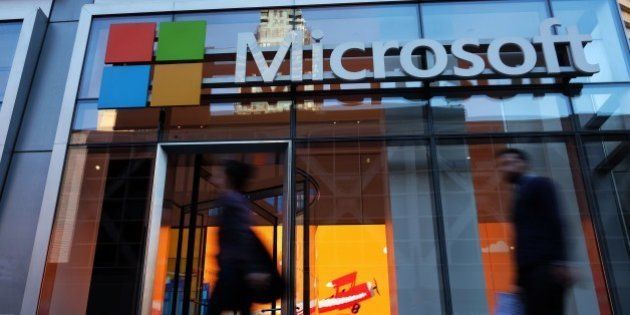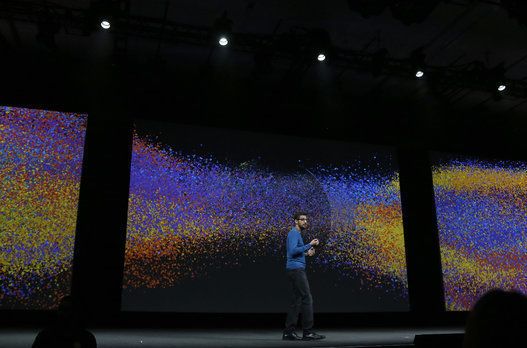
A few days back, in one of the training sessions for the new joiners in my office, we did a unique exercise. Focusing on collaboration within a project team, we were tasked with working together to break down a problem, execute it independently, share our answers and finally compile the findings together into a pre-existing template. Standard run of the mill stuff. The catch though was in the fact that each team member was to sit away from the others and teams (groups of 6) were to collaborate using an online chat and audio/video calling tool only. That tool was to be Microsoft's Lync. Now having worked on Lync before, I am quite familiar with most of its features. The rest of my team members and a majority of the 30 odd folks in the room were new to the software. One of our training leads had wryly commented before the exercise, "Lync is not the best piece of software in the world...but then neither is it the worst".
Within a few minutes, you could see the reasons behind that opinion. With 30 people logging in and beginning audio calls, Lync began to feel the pressure. In perfectly strong enterprise Wi-Fi settings where web-hosted videos were playing without a glitch, Lync started showing weak connection bars. The situation turned hilarious when we had to do video calling with each other in the same room for the final discussion. On average, every team had one member who was not able to connect or was getting booted out by Lync. We literally ended up shouting across tables to each other to make ourselves heard.
"Lync is not the best piece of software in the world...but then neither is it the worst"
This post is not a rant against Lync. On balance, I like the software and prefer to use it in office settings for conversations and calls. My purpose is to look at Lync's progenitor, Microsoft - the grand old daddy of enterprise software. Much like Lync, Microsoft and its ubiquitous Windows have enjoyed a mixed reputation over the years. Its core product, MS Office, has been the bedrock of corporate work culture and has defined how we come to view, document and interpret information across sectors and functions.
Despite its universal presence on practically every computing device owned or operated by a professional across the world, Microsoft was viewed, not with the love and humor we reserve for a close friend, but with the transactional view adopted towards devices in our everyday life such as refrigerator or a washing machine - life comes to a standstill if they break down, but you wouldn't stress out too much when deciding to buy a new one. Or if you are apartment hunting as I recently discovered, you wouldn't bother which brand is placed there - as long as the job gets done.
"Microsoft was viewed, not with the love and humor we reserve for a close friend, but with the transactional view adopted towards devices in our everyday life such as refrigerator or a washing machine."
This attitude, coupled with products that did get the job done, enabled the company to dominate the market in enterprise software. Yet it came at a price. In recent years, it is the consumer segment within technology that has grown and created a swathe of new companies rolling in the cash. You can present a long list of areas within this segment where Microsoft got blindsided, securely chugging along with its Windows cash cow - Internet search, mobile software, personal music player, cloud storage, personal computing devices and tablets. I am sure tech enthusiasts more informed than me will list more. Try thinking of the size of these markets and then think how much competition has elbowed Microsoft out. In each of these marquee segments, the company played catch up over the last decade and a half and in each it has struggled to make its presence felt (Bing, Zune, Nokia Lumia - the tombstones are endless).
So can Microsoft indeed be a consumer tech company? Even a couple of years back you would have thought that difficult. Yet, slowly the behemoth is pivoting. In a smartly worded initial statement on taking over as CEO, Satya Nadella took Microsoft away from the Enterprise/Consumer trade off and offered to position the company as productivity and platform provider - notice how this adoption of an encompassing category actually is closer to where Microsoft's competencies lie but also how it allows the company not to be wedded to a single or a series of devices. Google gives consumers access, Apple gives them an unforgettable experience, Microsoft needs to give them results. A solid product with good usability meeting unserved needs will do well - notice how the Surface Pro 3, after a rejig, received perhaps the best response any consumer device from Microsoft has ever received. The company had in fact underestimated international demand, ran out of stock and then had to replenish inventories.
"It is a folly to think that the corporate user laptop software market is locked for perpetuity."
Earlier this month, the company held a 'hardware event' on similar lines as Apple and unleashed a slew of new devices - including Surface Pro 4 and a new sleek Surface Laptop, that with its sleek design features, scarcely resembles anything out of the old Microsoft stable. The response was enthusiastic and for Microsoft, it allowed precious moments to be spoken of in appreciating tones about its hardware offerings.
As Satya Nadella defines a core vision that tries to be end user neutral, it is critical for Microsoft not to lose the design race. It is a folly to think that the corporate user laptop software market is locked for perpetuity. Already, for many creative jobs such as in the media, photography, research, innovation, laboratory work, digital and design consulting, Apple is making a play and replacing Windows which offers limited imagination for such users. The Surface Laptop is a move meant to address such constituencies. The cash cow that sustains Microsoft is not going away anytime soon but on the horizon loom threats that can chip away at a vast empire, device by device. For a company that has defined what 'doing work' on a computer meant for well over two decades, the challenge is now to shift from purely providing functionality to rendering a great experience. And oh yes, if they could, in the process, tweak Lync a little as well.



Contact HuffPost India
